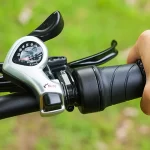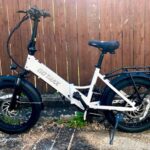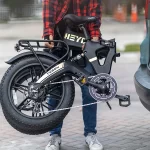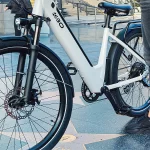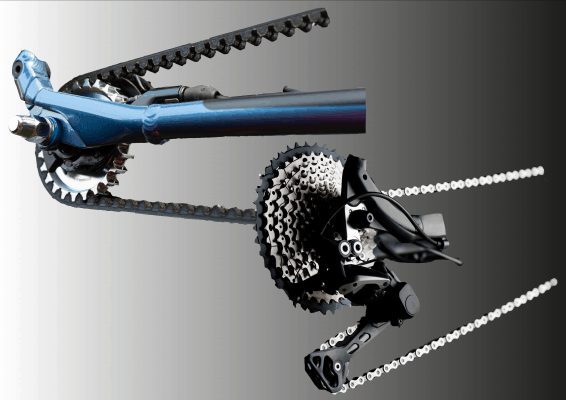
Chains have always been used on bikes, as part of their drivetrain, to propel them forward. The power generated from pedaling, is transferred to the rear wheel of the bike, by the chain. The rear wheel then drives the bike forward. Belt drives are an alternative to chains though, which you can find on some electric bikes. They are a newer technology than chains, which more and more manufacturers are utilizing.
Belt drives on electric bikes are increasing in popularity. They consist of the belt itself, made from a polymer, reinforced with carbon fibers for strength. This belt is a direct replacement for the bike chain. It runs between a rear cog and a front cog, to transfer the pedal power to the rear wheel. A belt drive provides various advantages over chains. These include less maintenance, more longevity and quiet operation.
Here, in this article, I will talk in depth about how belt drives and chain drives compare. This is to help you determine if you would prefer a belt drive to a chain drive, for your electric bike. Before continuing though, below is a table highlighting the main considerations with regard to having a belt drive on your electric bike.
Table of Contents
Longevity
Belt drives last a lot longer than chains. In fact, they can last up to 3 or 4 times longer. Cases can vary, but chains can need replacing after as little as 1000 miles, after often riding in less than ideal conditions. Less than ideal conditions, can include riding in the rain, or on muddy terrain. These conditions can speed up rusting and wear on chains.
A belt drive can last over 10,000 miles. In some cases they have lasted as long as around 20,000 miles. This is even in less than ideal conditions. Belts are no way near as affected by unideal riding conditions as chains. This is due to that they don’t allow mud and dirt to stay attached to them as much. This helps prevent any premature wear.

The carbon fibers that run throughout belts, makes them very tough and durable. They also have a nylon wear resistant fabric on the side that comes into contact with the cogs. These factors also help with the longevity of belts. The cogs that belts run between are made from a durable stainless steel, so they’re built to last. Additionally, belts do not stretch over time like chains do. Once a chain is stretched it can reduce the tension, which can lead to it slipping. So if a chain is too stretched, then it will need replacing.
The extra longevity that a belt drive provides, can be especially appreciated if you have an electric bike. This is due to the fact that electric bikes allow many people to cycle farther and more often, compared to regular bikes. This is especially since many people are turning to electric bikes as car replacements.
Belts are Quiet Operation
Belt drives operate very quietly. The belt itself doesn’t make any sound whilst it’s traveling, unlike chains, which make a mechanical sound. Also, with belt drives, there’s no derailleur shifting whilst you’re changing gear, to create any further sound.
If you’re cycling in a noisy city center, or if the motor on your electric bike makes a sound, then this may not make too much difference for you though. However, many people do enjoy the quietness of belt drives. Chains can operate quietly after lubrication though. Yet belt drives are quiet all the time.
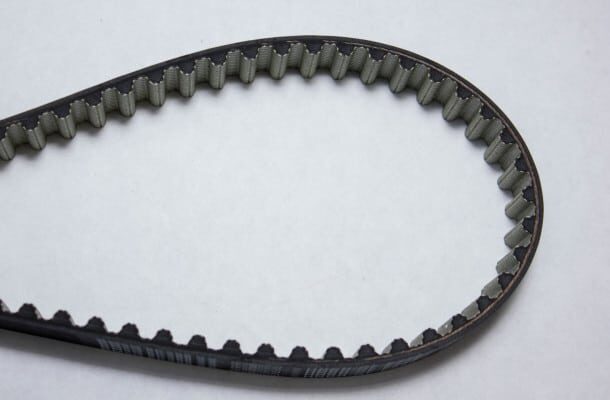
Belts Don’t Rust
This ties in with longevity. Belts do not rust at all. Chains, though, are susceptible to rust, especially if they’re not well maintained. Belts are impervious to salt and water, which can cause rust on chains. This is handy, if you live in a part of the world where it rains often. Also, it means that you can use water to clean a belt, without any fear of causing rust. This, by the way, means you don’t have to buy special chemicals and sprays, to clean belts.
Maintenance Considerations
Belts require far less maintenance than chains. This ties in with the longevity and the fact that belts don’t rust, as already talked about above. As chains can be susceptible to rusting, you need to lubricate them every so often. Lubricating your chain will keep it in good condition in general and keep it working better. Belts, by the way, do not ever need lubricating at all.
Belts also require far less cleaning than chains. Chains are far more susceptible to mud and debris getting caught in them. Again this can promote rusting and allow chains to lock up on you. So regular cleaning of your chain is especially needed, if you’re often riding in muddy off-road conditions. This will help prolong the chain’s life and help it to perform better. You can use special dedicated sprays to clean chains, like WD-40.
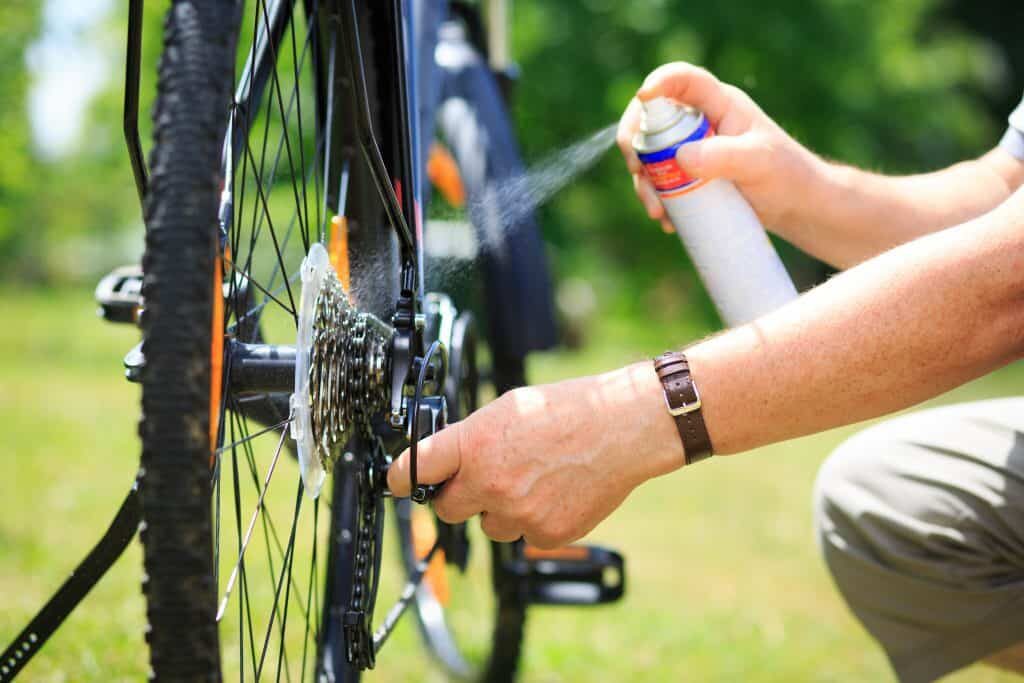
Belts don’t allow anywhere near as much dirt, mud and debris to get attached to them. Gates, who are the leading manufacturer of belt drive systems, have a patented design which has dropouts throughout the belt. These dropouts displace dirt and debris as the belt travels. This helps prevent, or at least minimize, the buildup of dirt and debris on the belt. You can easily wash off any dirt and mud that remains on the belt with water and a brush if needed. Remember, as mentioned above, you don’t need any special chemicals or sprays here, due to that water will not rust belts. However, you should find you’ll rarely need to clean belts, if ever. Only really if you’ve been riding in very muddy conditions.
Belt drives do not have a derailleur and a cassette, which geared chain drives have. The derailleur and cassette on chain drives can need tuning sometimes. This can be more often if the bike is being bashed around, due to rugged off-road use. Again, this is another reason why belt drives need less maintenance than chain drives. Belts are pretty much a one time setup and you’re good to go. This is very useful if you’re cycling often, say for commuting.
Belts are Less Likely to Derail
Belts are far less likely to derail from the rest of the mechanism, than chains. The belts are toothed on the inner side. This toothed surface on the belt interlinks with teeth on the cogs, to stop the belt from slipping off.
Additionally, gates belt drives have a center track, to further help prevent the belt from slipping from the cogs. This center track is a raised track that runs throughout the center of the diameter of the cog. There is also an indentation, running throughout the center of the inner side of the belt. This indentation in the belt aligns with this center track on the cogs. The belt is therefore nicely centered over the cogs, as well as being far less likely to derail. This center track design is currently patented by gates, so is currently exclusive to them. Also, gates use this center track design for many electric bikes.
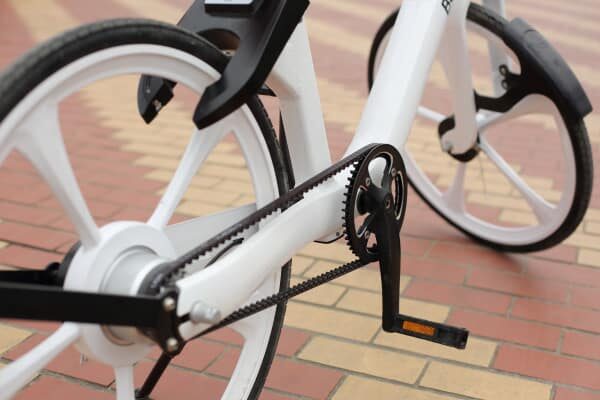
Bikes that have chains can have a chain guard to prevent the chain from slipping off on the outer side. This does not prevent chains from possibly slipping off the inner side though. Also, chains are greasy, so if you’re refitting the chain back to the bike, you will likely get a lot of grease on your hands.
Belts are Cleaner
Belts are just so much cleaner than chains. The reason for this ties in with where I talked about belt drives needing less maintenance than chain drives. As belts don’t need lubricating, they are not oily and greasy as a result. As mentioned above, though, chains do need lubricating. So if you’re riding a bike with a chain, you can possibly get oil and grease on your pants. However, some bikes with a chain have a chain guard. This can help minimize the likelihood of you getting grease and oil on your pants. Also, as talked about above, you’ll likely get grease on your hands if you have to reconnect a derailed chain. Whereas, you can run your hand along a belt and it’ll be perfectly clean.
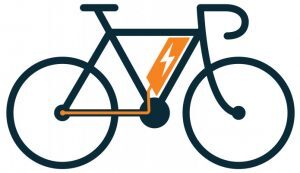
Again, as talked about above with regard to maintenance, belts don’t allow mud and dirt to stay attached to them very much. Whereas chains can easily get mud and debris caught up in them. So having a belt can be more ideal if you ever wish to transport your bike in the boot of a vehicle. You can be less concerned about grease and dirt from your bike getting on the boot upholstery.
Weight Considerations
Belts are lighter than chains. This is not the full picture though. Depending on whether your bike is single speed, or has gears, determines whether a chain, or a belt drive, is lighter. By the way, if you’re not sure, a single speed bike is a bike with a single gear ratio.
For belts to work properly, they always have to be aligned perfectly straight, between the front and rear cogs. This means that belt drives aren’t able to have the same regular gear systems that chain drives have, which includes a derailleur and a cassette. Instead, if you wish to have gears on a belt drive bike, you’ll need an internal geared hub. This is a unit that’s positioned at the center of the rear wheel and houses the gear system inside. These internal geared hubs, carry quite a bit of weight though. So if you have a belt drive and an internal geared hub, then it’s likely to be a heavier overall setup than a chain drive.
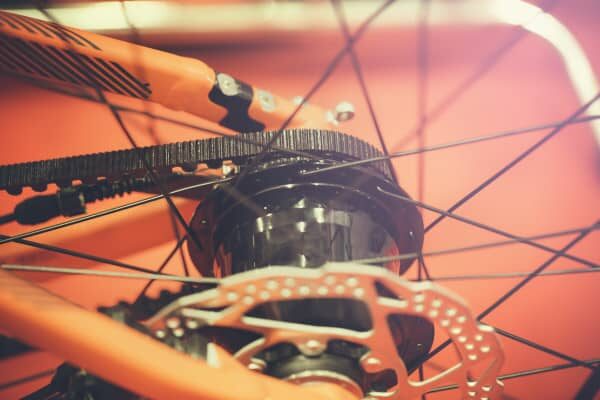 Belt Drive with Internal Geared Hub
Belt Drive with Internal Geared Hub
A belt drive will be lighter than a chain drive for a single speed bike though. Here, the belt drive will only consist of the belt and cogs. By the way, these front and rear cogs are often referred to as sprockets. You may like the idea of your bike being single speed, if you have an electric bike. Having gears may possibly be not as important for you, due to the extra boost you get with electric bikes. This can be especially if your cycling routes aren’t very hilly.
If you have an electric bike, you may have 2 different schools of thought, with regard to the weight of your drivetrain. You may wish to save as much further weight as possible, due to the extra weight of electric bikes. Alternatively, you may not be too concerned about weight, if you already have the extra weight of the battery and motor anyway. After all, the electric boost can make up for any shortcoming in speed, due to weight.
Motor Considerations
A disadvantage with having a belt drive on an electric bike, is that you can have a limitation on your choice of motor. Electric bike motors are either mid drive motors, or hub motors. Mid drive motors are positioned at the center of the bike, between the pedals. Hub motors are positioned at the center of either the front, or back wheel.
If you have an electric bike with a belt drive and an internal geared hub (as talked about above), then you can’t have a rear hub motor. You will therefore need to either have a front hub motor, or a mid drive motor. This will be a disadvantage if a rear hub motor is your preferred motor choice. My article “Hub Motors Vs Mid Drive Motors” talks in depth about the differences between these 2 motor types. This can help you determine which type of motor you’d prefer for your electric bike.
One consideration, though, is that mid drive motors are a higher cost than hub motors. So having both a mid drive motor and a belt drive on your electric bike, can stack up on the cost. Furthermore, having a chain does not restrict what motor type you have for your electric bike. So having a chain gives you the choice of any motor you like.
Chain Drives are Lower Cost than Belt Drives
Belt drives cost more than chain drives. So a belt drive will add more cost to an electric bike, compared to a chain drive. Belt drives are a newer technology than chains, which give a lot of advantages. So you’re getting what you pay for. If you’re also having an internal geared hub, then this will increase the cost even further.
Internal geared hubs can significantly increase the cost of an electric bike, especially if they are high end. It’s considered that Rohloff makes the highest end internal geared motors. They can cost as much as around $2000 or £1400, for their top end models. This video talks further about internal geared hubs and how they compare to a regular gearing system.
Belt drive systems can pay for themselves though. As mentioned before, belt drives can last up to 3 to 4 times longer than chain drives. So once you have a belt drive, you shouldn’t expect to need to replace it for a long time. You certainly should expect to replace it a lot later than a chain drive system. Therefore, over time, a belt drive can cost as much as a chain drive. Or at least not a lot more, in some cases. This is when taking into account replacements, as well as the upfront cost. Cost does also depend on the quality of the parts though, which can vary for both drive systems.
Below, is a table showing the typical price expectations, for the parts for both belt and drive chains.
You Need a Certain Type of Frame for Belts
You need the frame designed a certain way to accommodate a belt drive. As a result, not all manufacturers currently have belt drives on their bikes. However, the amount of manufacturers adopting belts is increasing.
Belts are one continuous piece, so they can’t come apart like chains can. So the frame needs to have a break in the rear triangle, to slip the belt through. Some bike frames may have what’s known as an upper chain stay, that allows for a belt. This is where there’s a horizontal part of the frame, which a belt drive can rest directly under. Chains can be fitted to any bike though. They can come apart to get them around the frame, to attach them to the bike. You can then reconnect the chain back together afterwards.
Additionally, a frame needs to be stiffness test approved, to accommodate a belt. If a frame is not stiff enough, then a belt drive will not function properly. As mentioned before, belts need to be aligned perfectly straight between the front and rear cogs. Too much flex in the frame will disrupt this, causing the belt to move out of alignment too much. The stiffness/flexibility of the frame is not such an issue for chains though. This is because straight alignment is not so important with chains.
Because a certain frame is required for belts, it’s not easy to swap a chain for a belt on an existing bike. So usually if you want a belt on your bike, it’s more ideal to buy a bike with the belt already attached. However, Riese and Muller do make a range of electric bikes with a chain drive, where a belt drive can be easily added later. Furthermore, another manufacturer called Veer does make belts that can be split (currently the only manufacturer that does this). This means you can fit these particular belts to any bike that has a stiff enough frame. So a Veer belt can be a good option, if you’re thinking of attaching a belt to an existing bike.
Full Suspension Considerations
This follows on from above, with regard to that certain frames are required for belts. Most of the time, belts aren’t compatible with full suspension bikes. This is due to the fact that belts need to stay at the same tension. As the suspension travels, the chain stay length changes. This can cause the tension of the belt to fluctuate, which affects its performance.
This can be another reason why it’s more ideal to buy an electric bike with the belt drive already, rather than add a belt to an existing electric bike. You may come by a newly built bike, that has both full suspension and a belt drive. Here, in theory, the belt drive should be designed to work well with the full suspension. Although you should still do your research, to make sure. Like check reviews and speak to retail assistants etc.
Efficiency
Which is the most efficient option between a belt, or a chain drive, is a question that’s often asked. The answer, though, is that it depends. The factors that the efficiency of a belt or chain drive train depends on, are as below. By the way, when talking about efficiency here, I’m referring to the effectiveness of the pedaling effort.
Stage in a drive train’s life – Belts create more friction than chains, in the short term. This means that belts are less efficient than chains at the early part of both their lifespans. Belts are more efficient than chains, at the later part of both their lifespans though. This is due to the fact that chains wear sooner than belts. This wear enhances friction on chains, causing decreased efficiency over time. Also, as mentioned before, chains stretch over time, whereas belts don’t. A stretched chain reduces tension, which, in turn, also reduces efficiency.
Cycling conditions – Belts can be more efficient than chains in adverse riding conditions. This can be at any stage of both their lifespans. The reason for this, is due to that belts do not retain as much mud and debris as chains. Remembering belt’s ability to remove debris, as mentioned before. If a chain is too clogged up with mud and debris, then it will reduce efficiency. Therefore, it is key to clean chains, when needed, to maintain their efficiency. So a clean, well maintained chain will still be more efficient than a belt, in the short term.
A consideration, though, is that you may deem pedaling efficiency less relevant with an electric bike. At least compared to a regular, non-electric bike. The electric boost can make up for any shortcoming with pedaling efficiency.
Belts Can Prematurely Wear Bearings
Belts can wear bearings quicker than chains, despite that belts are still far less maintenance overall. However, this is only really if the belt is at the maximum tension and if the frame isn’t stiff enough. So on a bike with a frame that’s the right stiffness for a belt, the tension should be OK to not speed up the wear of any bearings. Again, this backs up that usually it’s more ideal to buy a bike with a belt drive already. Rather than add a belt drive to an existing bike.
Trickier to Get Parts and Repairs for Belt Drives
It is trickier to get parts for belt drives, compared to chains. This is due to the fact that belts are a newer and more of a specialty technology, compared to chains. Many bike shops will not have belt drive parts and many bike repair shops don’t repair belt drives. That said, though, belt drives are very tough and durable and built to last. So you’re far less likely to need repairs and replacements with a belt drive, compared to a chain drive. There’s also no parts that may need tuning, sometimes on a belt drive, like a derailleur and cassette. So as mentioned before, belts are less maintenance than chains anyway.
Having mentioned above that belt drive parts can be tricky to find in shops, you can still find them online though. Even then, chain parts are easier to find online, as more websites sell them. However, all the time you’re searching on Amazon, or eBay, you shouldn’t have a problem. You can even go to the gates website, who is the market leader when it comes to belt drives.
Conclusion
Belts are a great option, if you want to get rid of the disadvantages you get from chains. This can include, if you want to remove, the possibility of getting chain grease on your pants. You may even appreciate the one time setup and go aspect of belt drives. For example, once you’ve bought a bike with a belt drive, you don’t ever need to lubricate it.
On the other hand, you may not feel the benefits of a belt, justify the higher upfront cost compared to a chain. You may even find that a belt drive system doesn’t suit you. This may be because you wish to have gears and a rear hub motor on your electric bike, which you can’t do with a belt drive. You may even want full suspension, but you may not be able to find a suitable full suspension electric bike, with a belt drive.
Ultimately, your choice between a belt or a chain drive, will be down to what you feel is best for you. Nevertheless, it’s good to know that the option of a belt drive for your electric bike is available.
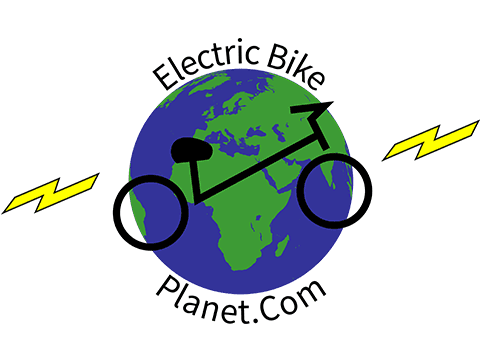
Captain Colyer is an expert in sustainable transportation with a Master’s degree in Environmental Engineering. With over 9 years of experience, he is dedicated to advancing eco-friendly commuting solutions. His work focuses on the latest advancements in electric bike technology and promoting sustainable living practices. At ElectricBikePlanet.com, Captain Colyer shares his in-depth knowledge and practical insights to help readers make informed decisions about electric bikes. Join them on their electric journey for the best e-bike advice and recommendations, and connect on Facebook, Pinterest, and Instagram.


